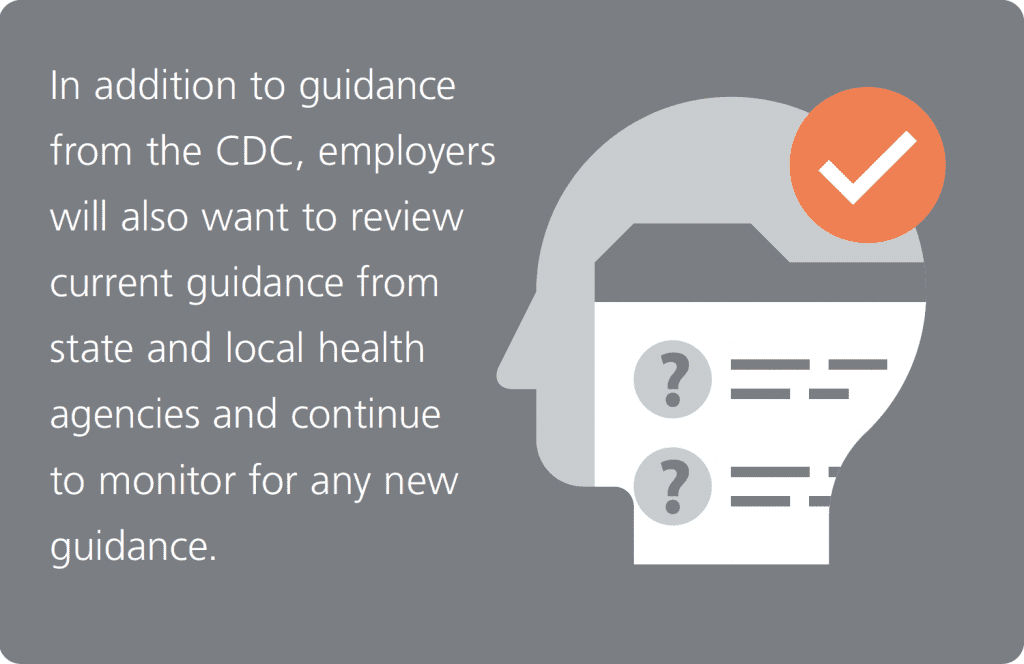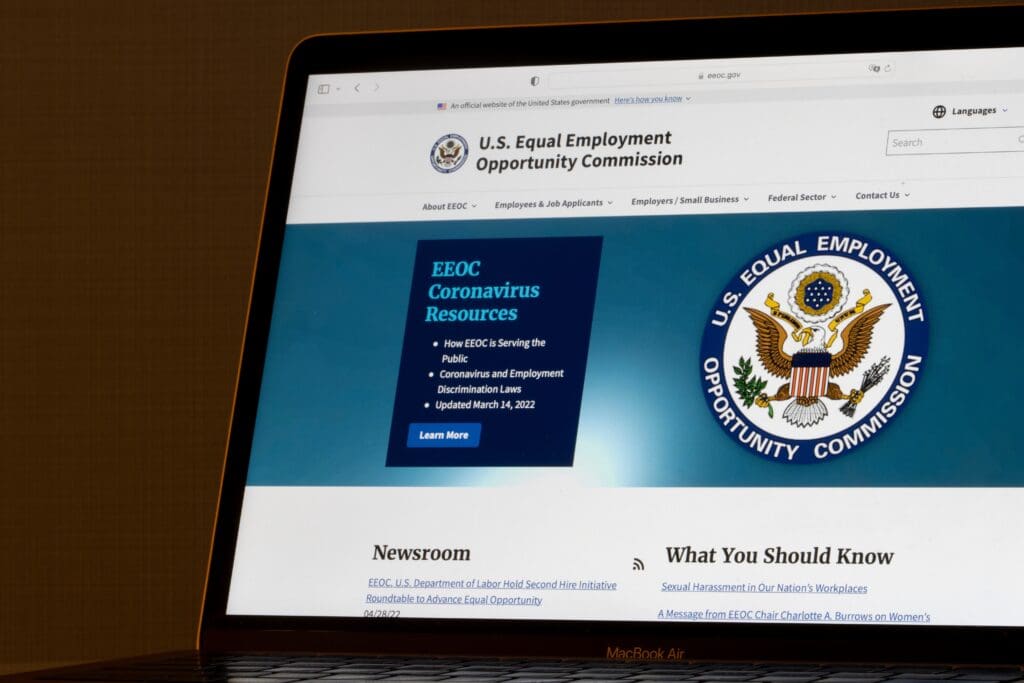Three key priorities for HR managers when bringing employees back to the office post-COVID-19.
By Pamela Lacy
As many U.S. states begin to lift their stay-at-home or similar orders, businesses across the country are weighing their options, questioning when and how to reopen their doors safely for both customers and employees. There are a wide range of laws and regulations, as well as guidance from federal, state, and local governmental authorities, that should be top of mind for business owners and HR managers as they prepare to welcome employees back to the workplace.
According to a Paychex study of 300 U.S. business owners issued during late April, nearly one in five businesses (19 percent) have furloughed staff while 30 percent have laid off some or all of their staff. Recalling workers who may have been furloughed or temporarily laid off during the pandemic entails many different considerations when it comes to business processes, employee pay and benefits, and safety precautions. Although it is unlikely that any business will immediately return to operating as it did pre-COVID-19, preparing for the workforce to return and communicating those plans can make a big difference in successfully and safely bringing employees back to the workplace.
Here are three things HR managers should consider prioritizing to help protect employees, customers, and the business when the time to reopen arrives.
1. Compliance. It’s crucial that all business owners and HR managers review their obligations under federal, state, and local laws and regulations. Be aware that there is a plethora of policies that may need to be created or updated based on recent legislative and/or regulatory changes. For example, keep updated on applicable state or local paid sick leave mandates prior to recalling employees. Some laws now require prior sick leave accruals to be reinstated under certain conditions. Additionally, business owners or HR managers should check current internal policies to determine any benefits reinstatement requirements based on the terms of the company’s policies. Any new policies or changes to existing policies should be communicated with employees.
Employers should also review both paid and unpaid leave policies to address employer obligations and employee rights under the specific provisions of their federal, state, and local laws. For example, under the federal Families First Coronavirus Response Act, certain employers must provide paid leave to eligible employees for COVID-19-related absences.
In the instance where an employee may have been terminated and signed a separation agreement, employers should check the language of the contract to see if rehiring requires an amendment to the separation agreement.
2. Documentation. There are several important forms of documentation that HR managers will want consider as employees return to work following COVID-19, given the potential financial changes employees have experienced in the past few months.
- Direct deposit forms. Business owners and HR managers should review state laws to determine if any new direct deposit authorization forms need to be completed for employees who are returning to work after being furloughed or temporarily laid off due to the pandemic. With these matters handled prior to re-opening, welcoming employees back onto payroll should be a smoother process, ensuring that all employees are paid on time by their preferred method.
- Form W-4. As many employees have felt financial hardships due to the pandemic, some may want or need to make withholding changes upon returning to work. If that’s the case, it’s reasonable to provide employees with a new Form W-4.
- Form I-9. When rehiring an employee within three years of their originally executed Form I-9, business owners or HR managers will have two options: either complete Section 3 of the executed Form I-9 on file or have the rehired employee complete a new Form I-9. Rehired employees whose original Form I-9 was executed more than three years ago must complete a new Form I-9. There are additional considerations for an employee whose work authorization has expired. The U.S. Citizenship and Immigration Services provides comprehensive information and instructions to help HR managers better understand their obligations.
- HR policies. Reopening also provides the chance to update and reinforce existing company HR policies, guidelines, and employee handbooks. Additionally, a company’s standard new hire documents should also be updated with any new policies and health and safety guidelines, and should be distributed to all employees returning to the office.
3. Implementation. Although states and businesses are beginning to reopen, it’s clear that the new normal will require a variety of precautions and safety measures. In addition to guidance from the Centers for Disease Control and Prevention (CDC), employers will also want to review current guidance from state and local health agencies and continue to monitor for any new guidance. Organizations that can accommodate working remotely may be required by a state or local law to continue this practice or make accommodations for employees who meet certain criteria. Businesses should consider reviewing how they will address their legal obligations and employee requests in this area.
To help make employees feel more comfortable, businesses should also consider providing the appropriate personal protective equipment (PPE), such as masks and gloves, and any additional cleaning and sanitizing supplies such as soap and hand sanitizer. By supplying these items, businesses are enabling employees to take control of their health and safety, and some employees may feel more at ease knowing that their employer cares about their well-being. In addition to helping employees feel more comfortable when physically returning to the workplace, businesses should determine if there are federal, state, or local requirements to provide any additional supplies.
Businesses should also be sure to review potential high-touch areas within the facility where social distancing precautions may not be an option, such as kitchen areas, breakrooms, and bathrooms. After doing so, assess what safety measures -or temporary space closures -must be put in place to ensure a safe environment. This may require more frequent cleaning, prohibiting the use of shared equipment when possible, and regulating the number of people in any one area at a time. Implementing these measures may help lower the risk for possible infection and enable employees to feel safer once returning to the workplace.
The Bottom Line
As business owners and HR managers prepare to reopen their doors and welcome employees back to work, it’s important that they carefully follow federal, state, and local laws and regulations. Keeping employee and customer safety and well-being top of mind should be a main priority and communicated as such.
Businesses should ensure that all employee documents and HR policies are updated, laws and regulations are enforced, and employees are well-equipped to stay healthy at work. During these uncertain times, ensuring proper due diligence and understanding the concerns of the employees will help businesses prepare to open despite the new reality.
Pamela Lacy is an HR coach for Paychex.















